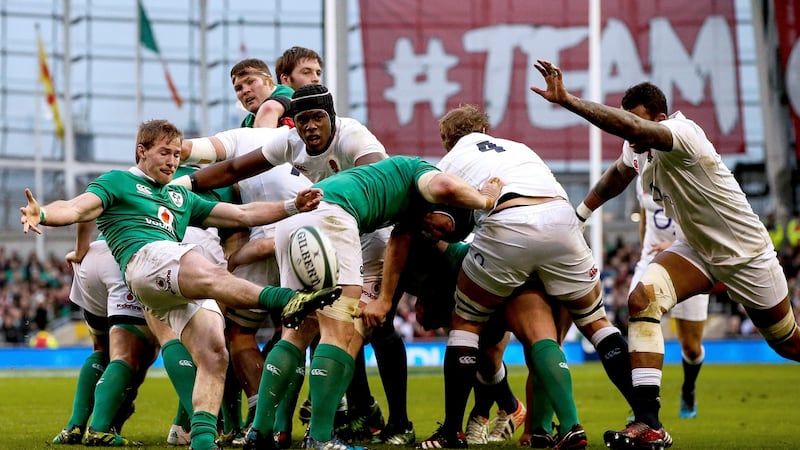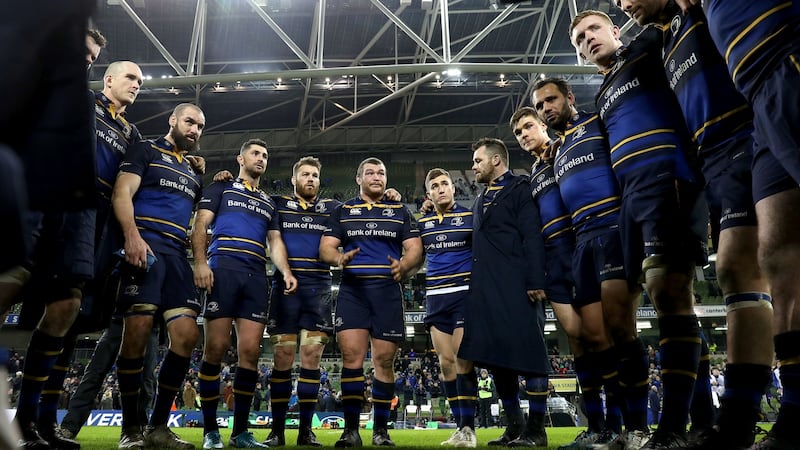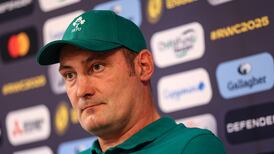What the hell is a good year in Irish rugby anymore? To a large degree, it’s in the eye of the beholder, and whether one is the half glass half full, or half empty, camp. So it is that 2017 is more open to interpretation than most years, for in many respects it was a very good year; just that it didn’t come with much in the way of tangible reward.
Silverware is the ultimate yardstick. Perhaps a little unfairly, it defines careers. Silverware is what makes great careers, well, great. That’s what made the Grand Slam for a relatively golden generation such a coveted triumph, almost desperately so.
Finally bridging that overdue 61-year gap between Ireland's first and second Grand Slam in 2009 was almost a relief as much as anything. It meant that the likes of Brian O'Driscoll, Paul O'Connell, Ronan O'Gara, John Hayes, Peter Stringer, Jamie Heaslip, Rob Kearney, Tommy Bowe, Jerry Flannery, David Wallace and others could lay claim to the biggest European rugby prize of all.
For many of them, this was coupled with further success in the Heineken Cup come European Champions Cup, and what was the Celtic League turned Guinness Pro14. And except for the four-yearly World Cup cycle, in seasons such as this, the Six Nations, European Cup, Pro14 and Challenge Cup constitute the only silverware on offer.
The World Cups of 2007, 2011 and 2015 brought familiar disappointment, in the shape of a pool exit and two quarter-final defeats, but in the 10-year period between 2005-06 and 2014-15, Irish rugby enjoyed a golden era like no other. In all, there were 15 trophies, with three Six Nations titles, five European Cups, a Challenge Cup and six Pro12 titles.
That was quite a bountiful return. We were spoiled, and even the 2015-16 season, when Ireland finished third in the Six Nations and no Irish team reached the knockout stages of the European Cup for the first time in 14 years, was redeemed by Connacht memorably and stylishly claiming their first major trophy when winning the Pro12.
By contrast, for only the third time since 2005, 2017 yielded no silverware for Ireland or its provincial sides, and there was also the antic-climax of Ireland’s performance in the Women’s Rugby World Cup on home soil. So much goodwill, so much effort, so much defiance until the end, for so little reward.
The Irish men’s team had come into the year on the back of a memorable November 2016, with the historic win over the All Blacks in Chicago, and a full-on return meeting two week later and a resourceful win over the Wallabies.
That made the opening defeat in Murrayfield all the more disappointing, when recovering from a sluggish first half-hour to then let slip a winning position, as well as the loss away to Wales, even if a merited win over England denied Eddie Jones’ team a repeat Slam and sealed a second place finish.

There was an even more acute disappointment on the provincial front. Having topped their pools so impressively and then handsomely beaten Wasps and Toulouse at home, Leinster and Munster especially hit something of a glass ceiling when going out at the semi final stages in Europe to Clermont and Saracens. Furthermore, Leinster and Munster were in turn out-maneuvered by an inspired Scarlets’ side in the semi finals and final despite having home advantage.
At least Ireland's win over England had also helped to ensure a strong Irish contingent on the British & Irish Lions tour. This was perhaps the biggest achievement of the calendar year, namely the performances of Tadhg Furlong, Sean O'Brien, Peter O'Mahony, Conor Murray and Johnny Sexton which contributed to the Lions' drawing the series in New Zealand, even if O'Brien for one might beg to differ!
Meanwhile, Joe Schmidt and co were casting an eye toward the 2019 World Cup in Japan by further broadening the squad's base in beating the USA and Japan (twice) in June, before there was the acute disappointment of the lost World Cup bid for 2023.
Six years work and giddy optimism yielded only a paltry eight votes and with that a first round exit. The Irish bid ultimately fell short due to a lack of what Philip Browne called "shiny new stadiums" in coming third in the recommendation report, but they were also outdone by the financial muscle and political lobbying of the French bid.
Amid all this, the big Lions guns returned to swat aside South Africa by a record 38-3 and followed that up with wins over Fiji and Argentina to complete an unbeaten Guinness Series. Seven successive wins, and nine out of 11 in 2017, saw Ireland end the year ranked third in the world.
What’s more, the Irish players returned from an exacting Lions tour relatively unscathed. The first four rounds in the European competitions have yielded 14 wins, one draw and only one defeat. Leinster, Munster and Connacht all lead their respective pools, with Ulster second in theirs.

While Glasgow especially and the Scarlets are each setting a scorching pace in the respective Conferences of the brave new world in the Pro14, the race to secure passage straight into the last four and with that home advantage in the semi-finals, Munster, Leinster and Ulster are all in the playoff places.
Hence, 2017 came to an end on a sufficiently encouraging note for both the provinces and Ireland to generate well-founded expectations, which is no bad thing, for 2018. The provinces’ fate beyond the pool stages in Europe will be known by the third weekend in January, and a fortnight later Ireland begin their Six Nations campaign away to France, before three home games in a row against Italy, Wales and Scotland and the grand finale away to England on St Patrick’s Day.
Leinster go into the New Year as favourites for both the Guinness Pro14 and the European Champions Cup (with Irish bookmakers at any rate) which admittedly would be a very tall order. With Glasgow and the Scarlets second and third favourites in the Pro14, Munster and Ulster are fourth and fifth in the betting, while Munster are fifth favourites in the Champions Cup behind Clermont, Saracens and La Rochelle.
Ireland, meanwhile, are second favourites for the Six Nations at 12/5 behind England, who are odds on at 4/5 to complete the tournament’s first ever outright three-in-a-row.
At the least, 2017 has set up 2018 pretty nicely.













